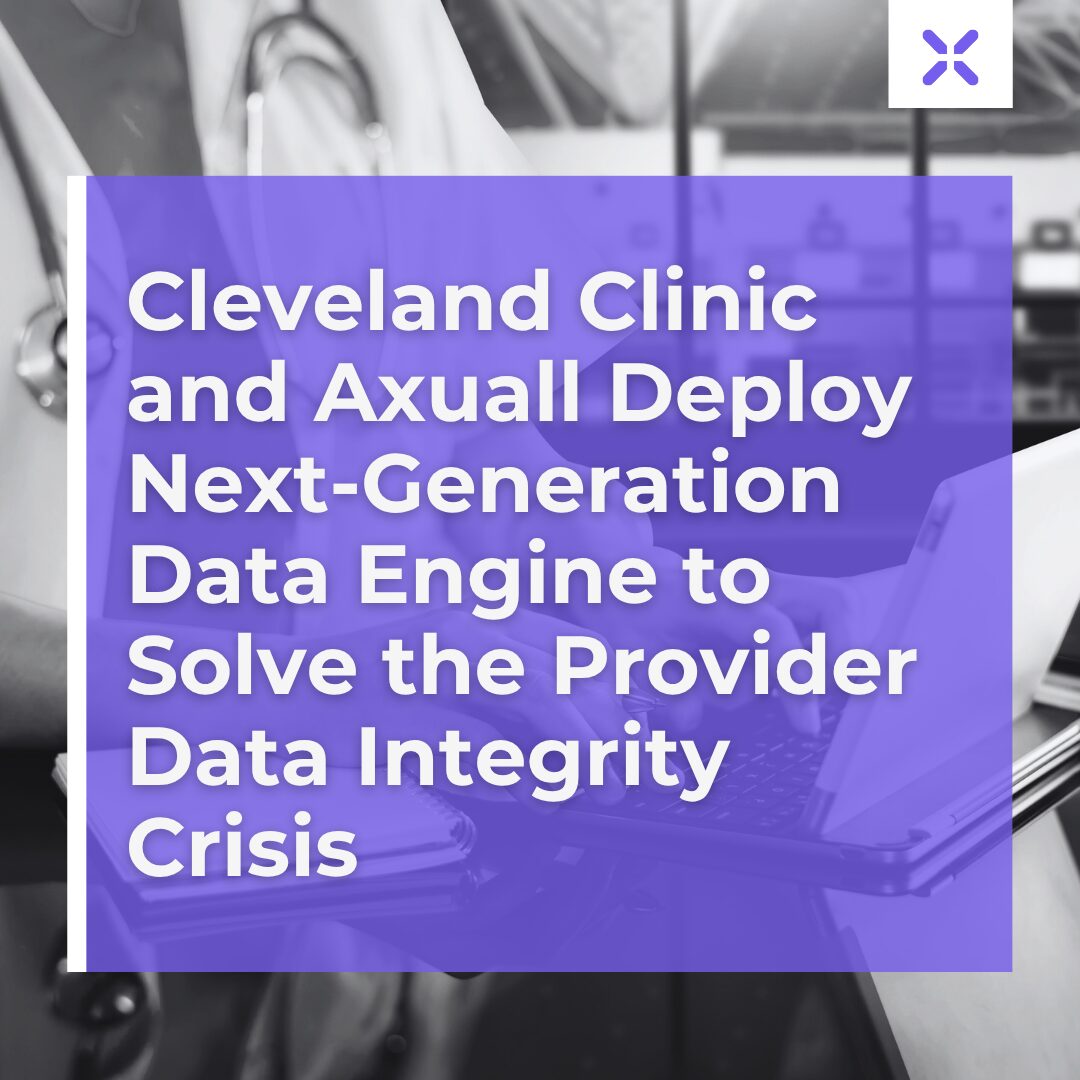Cleveland, OH – October 28, 2024—Axuall, the industry leader in clinical workforce intelligence, and the world-renowned Cleveland Clinic today announced a long-term agreement to co-develop and deploy Axuall Sync. This collaboration will dramatically improve the accuracy, recency, and completeness of provider data for health systems, addressing one of the healthcare industry’s most persistent and costly challenges.
Over half of all healthcare provider directories contain significant errors, according to the Centers for Medicaid and Medicare Services. Such gaps often lead to missed opportunities for patient care, scheduling breakdowns, and non-compliance. Sync leverages Axuall’s provider data network—built from thousands of real-world sources spanning over 27 billion data points—to create a “super record” for each clinician. This robust profile, aided by machine learning, includes everything from demographics and credentials to specialty, practice patterns, health system alignment, and even an attrition risk score.
“The challenge of stale provider data goes far beyond a simple database issue; it’s about unlocking the full potential of our healthcare networks,” acknowledged Charlie Lougheed, the CEO and founder of Axuall. “Axuall is shifting the paradigm from a costly struggle to maintain data to a future where intelligent, near real-time information actively enhances care coordination and optimizes our entire healthcare ecosystem.”
Cleveland Clinic engaged with Axuall Sync to enhance management of extensive provider data. Axuall completed an update of 50,000 provider records within three days, improving accuracy and efficiency. Accurate provider data supports seamless referrals, care coordination, and communication. Axuall is now managing the health system’s complete 200,000+ external provider records.
“As a destination hospital facility with a significant global presence, Cleveland Clinic manages an extraordinarily high volume of new external provider records daily. The sheer scale of referral-driven patient flow means our provider data needs are constantly expanding,” said Kate Neal, IT Director of Access Innovations and CRM at Cleveland Clinic. “By ensuring provider data is accurate and up to date, we have strengthened our ability to meet CMS Notification of Admissions regulatory requirements while closing critical gaps in transitions of care.”
Sync is designed to automate the ingestion of curated provider data into core systems via APIs and vendor-specific connectors, supporting platforms such as Epic’s Schedulable Epic Resource (SER) and Provider-on-the-Fly functionality, Salesforce, and more. Future use cases at Cleveland Clinic will include precision scheduling—leveraging real-world practice profiles to more accurately match patients to physicians—and provider population analytics to close healthcare supply and demand gaps in the community.
About Axuall
Built with leading healthcare systems, Axuall is a workforce intelligence company powered by a national, near real-time practitioner data network. The technology enables healthcare systems, staffing firms, telehealth, and health plans to dramatically reduce onboarding and enrollment time while also providing unique, powerful data insights for network planning, analytics, and reporting. To learn more, visit www.axuall.com.
About Cleveland Clinic
Cleveland Clinic is a nonprofit multispecialty academic medical center that integrates clinical and hospital care with research and education. Located in Cleveland, Ohio, it was founded in 1921 by four renowned physicians with a vision of providing outstanding patient care based upon the principles of cooperation, compassion and innovation. Cleveland Clinic has pioneered many medical breakthroughs, including coronary artery bypass surgery and the first face transplant in the United States. Cleveland Clinic is consistently recognized in the U.S. and throughout the world for its expertise and care. Among Cleveland Clinic’s 82,600 employees worldwide are more than 5,786 salaried physicians and researchers, and 20,700 registered nurses and advanced practice providers, representing 140 medical specialties and subspecialties. Cleveland Clinic is a 6,728-bed health system that includes a 173-acre main campus near downtown Cleveland, 23 hospitals, 280 outpatient facilities, including locations in northeast Ohio; Florida; Las Vegas, Nevada; Toronto, Canada; Abu Dhabi, UAE; and London, England. In 2024, there were 15.7 million outpatient encounters, 333,000 hospital admissions and observations, and 320,000 surgeries and procedures throughout Cleveland Clinic’s health system. Patients came for treatment from every state and 112 countries. Visit us at clevelandclinic.org. Follow us at x.com/CleClinicNews. News and resources are available at newsroom.clevelandclinic.org.
Media Contact
Jeff Rusack
Media Relations Manager
KNB Communications
axuall@knbcomm.com
